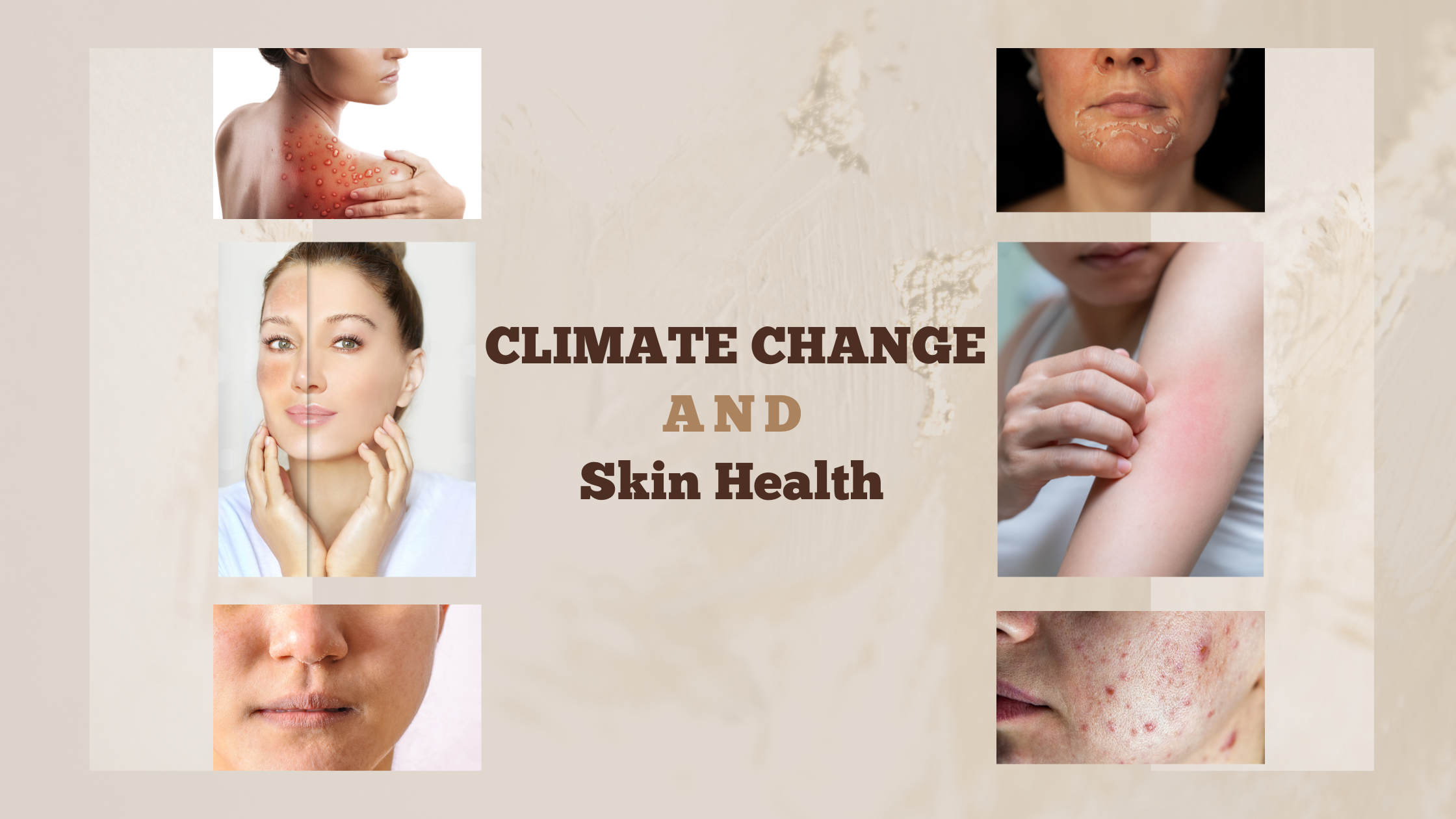The effects of climate change extend beyond the melting ice caps and rising sea levels. The warming planet is increasingly altering the conditions of our environment, with significant impacts on human health, particularly our skin. While the broader consequences of climate change on ecosystems and weather patterns are well-documented, the relationship between climate change and skin diseases is often overlooked. However, as our planet's climate shifts, so too does the incidence and severity of various skin conditions.
Climate Change and Skin Diseases: A Complex Relationship
Skin, being the most exposed organ to the environment, is particularly vulnerable to the changes brought about by climate shifts. The growing evidence linking climate change to skin diseases highlights a complex relationship influenced by various factors such as temperature, humidity, and extreme weather events. As climate change intensifies, dermatologists are witnessing a rise in skin conditions that are directly or indirectly related to environmental changes.
One of the most significant effects of climate change is the alteration of the distribution of vector-borne diseases. Rising temperatures and changing precipitation patterns are expanding the habitats of insects like mosquitoes and ticks, leading to an increase in diseases such as leishmaniasis and Lyme disease, which have direct skin implications. Warmer and more humid environments also create ideal conditions for bacterial and fungal infections, leading to a rise in skin infections.
The Impact of Environmental Changes on Chronic Skin Conditions
Chronic skin conditions such as psoriasis and atopic dermatitis are particularly sensitive to environmental changes. Cold, dry climates can exacerbate symptoms, leading to increased discomfort and a higher likelihood of flare-ups. On the other hand, warmer, more humid climates can also trigger skin issues, particularly by promoting the growth of bacteria and fungi that aggravate these conditions.
For example, the paper notes that sebum production, which affects conditions like acne, tends to increase in warmer months. This can result in seasonal fluctuations in the severity of acne, with many sufferers experiencing worsening symptoms during the summer. Conversely, some individuals report improvements in their skin condition with increased sun exposure, making the relationship between climate and skin diseases highly individual and complex.
Extreme Weather Events and Skin Health
Climate change is not just about gradual shifts in temperature; it also includes an increase in extreme weather events such as hurricanes, floods, and droughts. These events can have immediate and severe consequences for skin health. Floods, for example, often lead to outbreaks of skin infections due to the proliferation of bacteria in contaminated water. In post-disaster settings, skin diseases such as scabies, eczema, and various bacterial infections become more prevalent, highlighting the need for enhanced preventive measures during such events.
Moreover, natural disasters can lead to long-term skin issues due to prolonged exposure to polluted water and other environmental hazards. In the aftermath of Hurricane Katrina, for instance, there was a significant increase in cases of skin infections, many of which were caused by antibiotic-resistant bacteria, underscoring the need for public health interventions in the face of climate-related disasters.
UV Radiation and Skin Cancer
Another critical concern is the impact of climate change on UV radiation levels. As the ozone layer depletes and cloud cover patterns shift, more UV radiation reaches the Earth's surface, increasing the risk of skin cancers such as melanoma, squamous cell carcinoma, and basal cell carcinoma. The paper highlights that for every 1% reduction in the ozone layer, the incidence of melanoma could rise by up to 2%, with similar increases for other types of skin cancer.
Global warming also contributes to higher outdoor temperatures, encouraging people to spend more time in the sun, often without adequate protection. This behavioral shift further exacerbates the risks associated with increased UV exposure, making skin cancer prevention a growing public health challenge in the age of climate change.
Preventive Measures and the Role of Dermatologists
As climate change continues to impact skin health, the role of dermatologists becomes increasingly important. Public health campaigns focused on sun protection, skin hydration, and preventive measures against environmental hazards are essential in mitigating the effects of climate change on skin. Dermatologists can also play a crucial role in educating patients about the importance of protective measures, such as using sunscreen, wearing appropriate clothing, and maintaining proper skin hydration in changing environmental conditions.
Furthermore, dermatologists must be prepared for the emergence of new skin diseases and the resurgence of old ones as climate change continues to alter the global landscape. In this new era, understanding the link between environmental factors and skin health is key to developing effective treatment and prevention strategies.
Conclusion
Climate change is no longer a distant threat—it is a present reality that affects every aspect of our lives, including our skin. As the planet warms and extreme weather events become more frequent, the incidence of skin diseases is expected to rise. By acknowledging the connection between climate change and skin health, we can better prepare ourselves to face the dermatological challenges of the future. Preventive measures, public awareness, and ongoing research are essential in addressing the growing impact of climate change on skin health.

